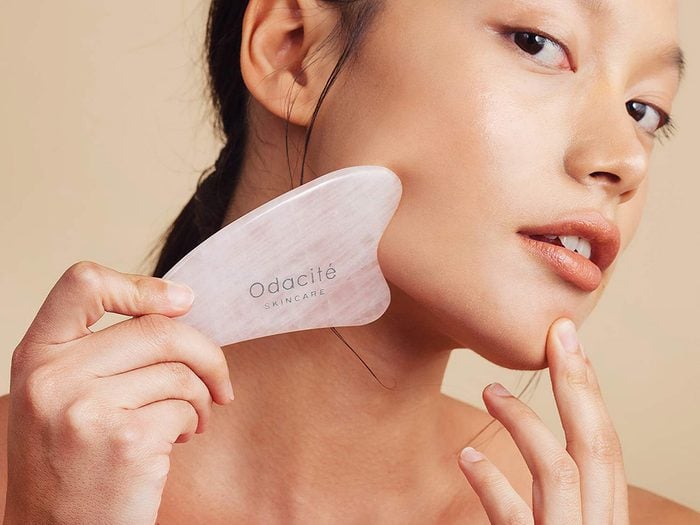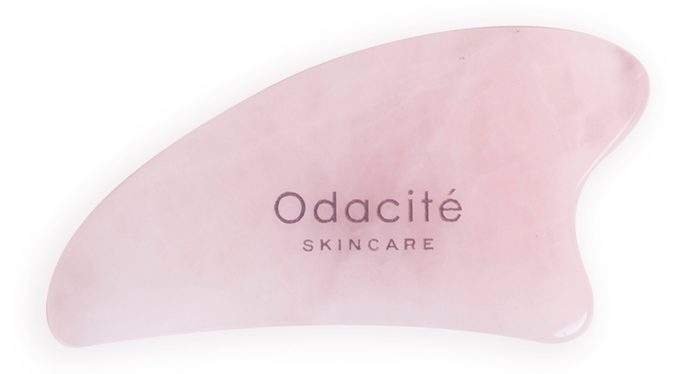The Best Thing to Do for Your Skin in Lockdown

Here's why gua sha is more popular than ever.
I get a facial about once a year, always in the fall, when my skin seemingly decides to show me all of its talents—it can be dry and blemished, dull and blotchy, flaky and shiny. So when this year’s appointment got cancelled due to the latest round of Covid closures, I considered the at-home options that could get my skin back to its healthy summer state. Should I try an at-home face steamer? Too risky. A red-light therapy mask? Too uncomfortable. A DIY microneedling kit? The stuff of nightmares.
During my brainstorming, I came across a stream of gua sha videos on TikTok. In each video, a woman stared at the camera while gliding a flat pastel-coloured tool up her neck, across each side of her face, and up to her hairline. Every time, the before and after comparisons left me a bit flabbergasted, wondering if the results were edited. (They weren’t.)
Gua sha is used in traditional Chinese medicine to reduce pain and tension. It helps promote lymphatic drainage and has more recently gained popularity for its supposed beauty benefits—which I was hesitant to believe. But seeing the gua sha tool in action in TikTok videos (which have accumulated 84.8 million views) convinced me to give it a try.

Crystal Contour Gua Sha Rose Quartz, $55, thedetoxmarket.ca
I have now been addicted to my gua sha tool for two weeks. Every other night, it’s my companion for solo nights spent watching reruns of whatever. Like facial cupping, I gua sha to release tension in my forehead, after a long day of staring at a computer screen. I use the edges to massage TMJ pain and attempt to rub away any fine lines. The gua sha tool works just the way the videos showed—my eyebrows look lifted, my face a little sculpted, my skin glowing and more hydrated (the latter part thanks to the serum I apply before gua sha-ing).
Using a gua sha tool can also improve dark circles and puffiness around the eyes, says Valerie Grandury, founder of Odacité. “Sculpting, for me, takes more than just one session, but if you practice it regularly, you will see that as well.” Massaging the muscles in the face (there are 42 muscles of them) also helps stimulate more collagen, says Grandery.
How does it work such miracles? Gua sha helps to push and move stuck lymphatic fluid, which in turn de-puffs and sculpts the face, says Sarah Kreitzer, a registered acupuncturist and clinic owner of Acupuncture Center Toronto. She sees it as a natural (and cost effective) approach to Botox—not to mention, a much safer and more convenient treatment during a pandemic. Plus, it’s super relaxing. —just look at this video.
Next: We Tried Shampoo Bars to See If These Eco-Friendly Products Are Worth The Switch




